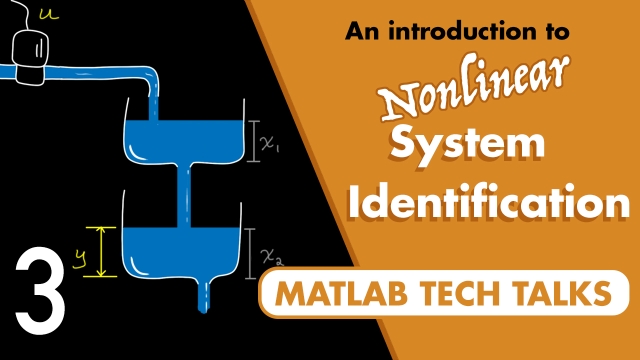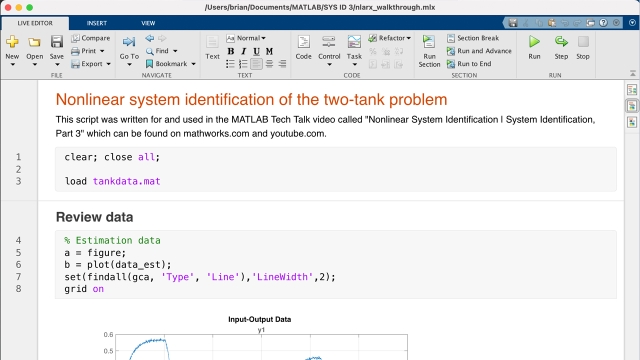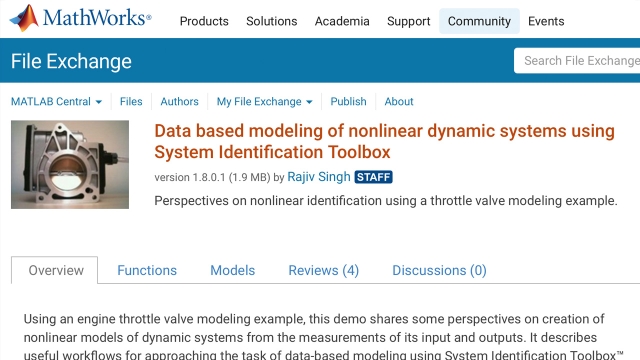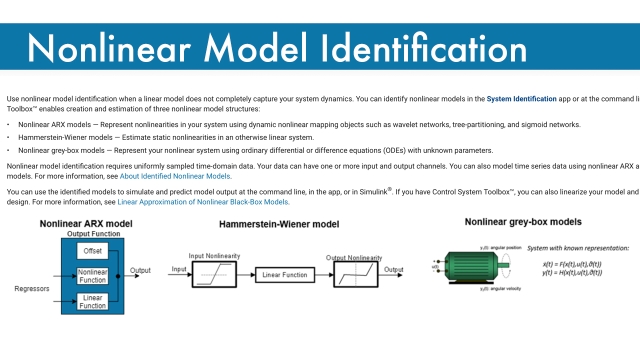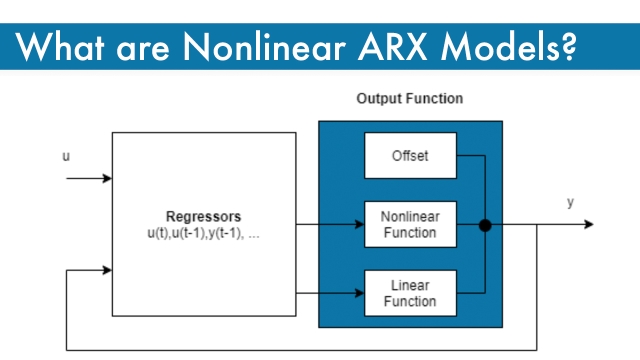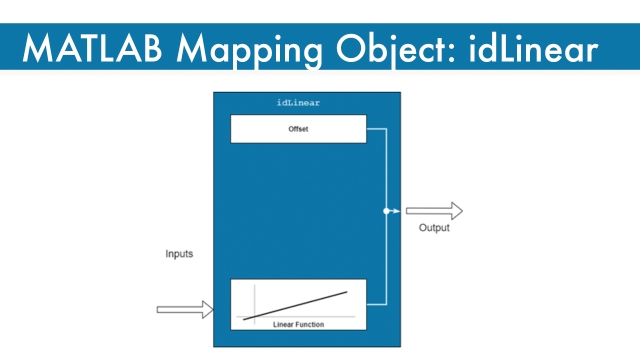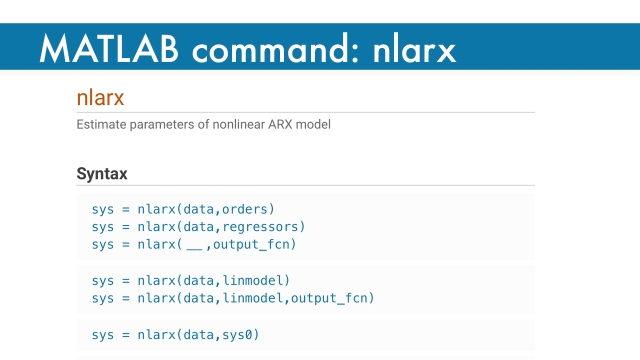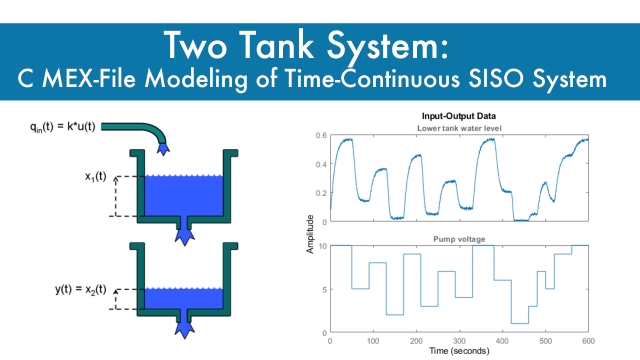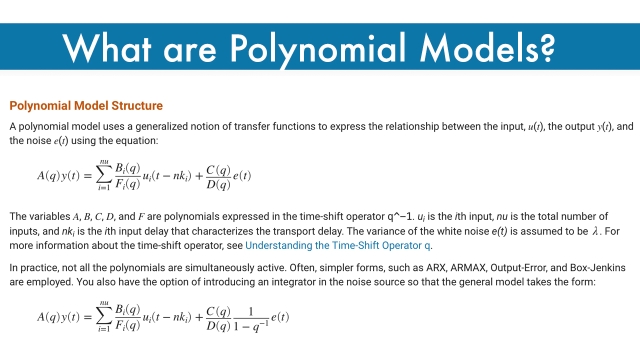
These are the resources that are referenced throughout the MATLAB Tech Talk video I made called "Nonlinear System Identification | System Identification, Part 3"
Here is the MATLAB Tech Talk video on nonlinear system identification. If you've already seen the video and are just looking for the references that I used to make it then keep on scrolling!
Nonlinear System Identification | System Identification, Part 3
Learn about nonlinear system identification by walking through one of the many possible model options: A nonlinear ARX model. Brian Douglas covers the importance of adding an offset term to...
See MoreI've posted the simple MATLAB script to Github that I used in the video. I think a good way to use it would be to modify some of the parameters of the different system identification functions and see how it impacts the result. Check it out!
MATLAB scripts for "Nonlinear System Identification | System Identification,...
This Github repo contains the data files and MATLAB scripts that were used in "Nonlinear System Identification | System Identification, Part 3".
See MoreThis MATLAB script is amazing and was the inspiration for the way I decided to build up the nonlinear ARX model from a linear ARX model, to an offset term, to nonlinear regressors, and finally to a nonlinear output function. There is way more in this script than what I covered and I recommend you check it out if you'd like to see multiples ways to do system identification on a single dataset.
Data based modeling of nonlinear dynamic systems using System Identification...
Using an engine throttle valve modeling example, this demo shares some perspectives on creation of nonlinear models of dynamic systems from the measurements of its input and outputs. It...
See MoreThis page does a good job of laying out the overview of nonlinear model identification. Plus, it could be used as a launch point for exploring the dozens of other pages that Mathworks has created on all things nonlinear system identification related.
Nonlinear Model Identification
Mathwork overview page describing nonlinear model identification. Use nonlinear model identification when a linear model does not completely capture your system dynamics. You can identify...
See MoreIf you want to learn a bit more about nonlinear ARX models then check out this page. It goes through the math that I showed in the video (but not in like 15 seconds like I did!)
What are Nonlinear ARX Models?
This Mathworks page provides an overview of Nonlinear ARX Models.Nonlinear ARX models extend the linear ARX models to the nonlinear case. The structure of these models enables you to model...
See MoreI put this here since I mentioned it in the video but if you're not specifically using idLinear in your project you can safely skip this resource for now.
MATLAB Documentation page: idLinear mapping object
This is the Mathworks documentation page for the idLinear mapping object.
See MoreCheck this out if you want a little more information into how the nlarx MATLAB command works.
MATLAB Documentation page: nlarx command
This is the Mathworks documentation page for the nlarx MATLAB command.
See MoreI didn't run this example in the video, but I used the first section where the system differential equations were derived using first principles. By using this physical intuition, I was able to come up with a good nonlinear regressor that allowed for a better fit.
Two Tank System: C MEX-File Modeling of Time-Continuous SISO System
This MATLAB example shows how to perform IDNLGREY modeling based on C MEX model files. It uses a simple system where nonlinear state space modeling really pays off.
See MoreNonlinear ARX models are just a subset of a larger class of polynomial models. This page does a great job explaining what they are and what each of the subset model structures are called.
What are Polynomial Models?
This Mathworks page provides an overview of polynomial models.
See More
